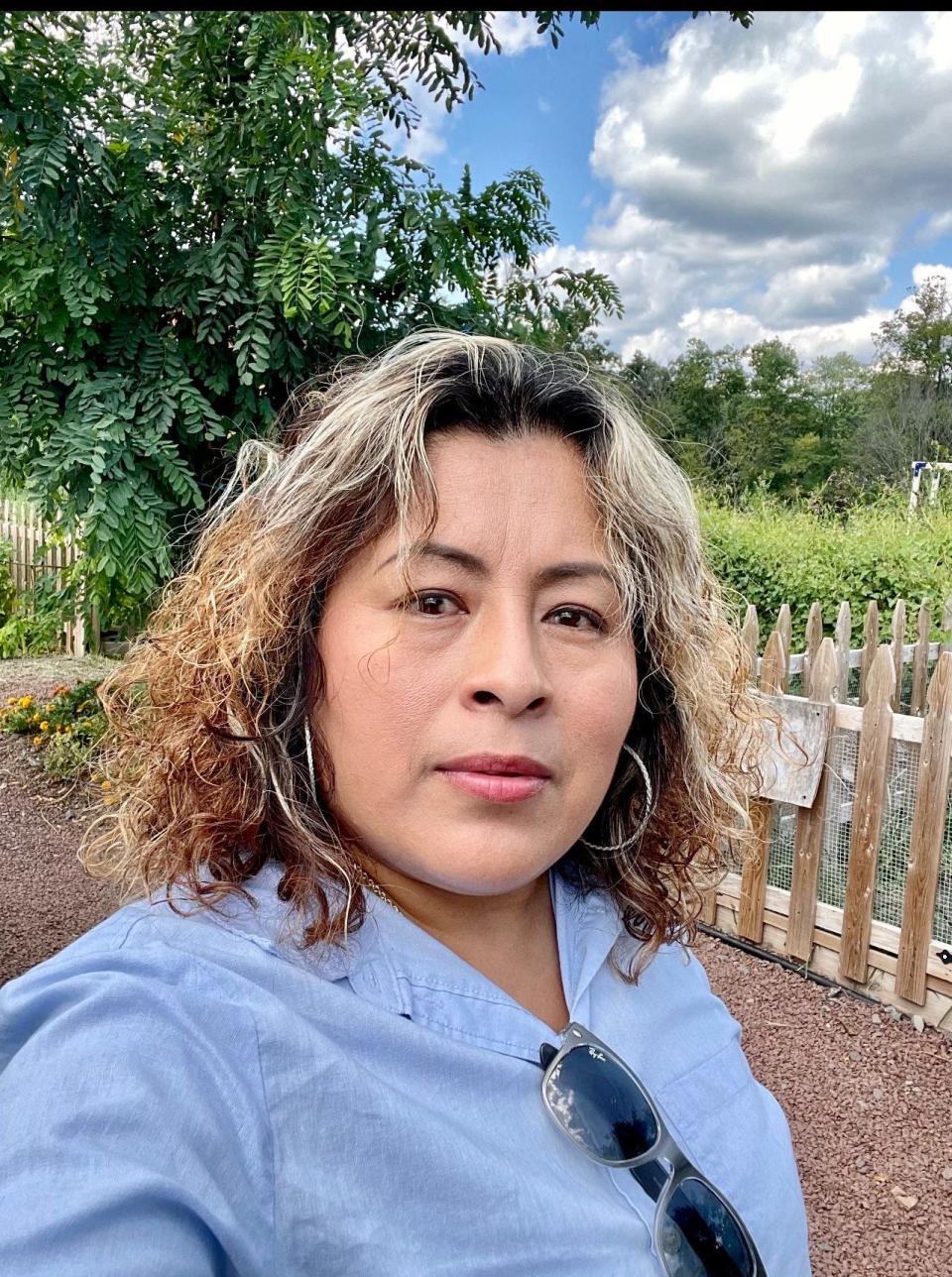Enrichment only for the rich? How school segregation continues to divide students by income
Kathy Giglio’s high school memories in Bridgeport, Connecticut, include regular lockdowns and the sound of gunfire in the lobby. Classrooms lacked basic supplies and teachers didn’t notice how often she skipped class. Desks tended to be broken and textbooks decades old.
“You could tell it was very poverty-driven, with the attitudes of the students and the attitudes of the staff,” said Giglio, 34. “It was a zoo in my high school – there wasn’t a lot of learning that you were able to do because life was in the way.” Her 10-year-old daughter now attends school in the same district, and conditions haven’t improved much.
Giglio, who is Latina, appreciates living in the community she grew up in, near her parents and among other people of color working hard to give their children as many opportunities as possible. Most Bridgeport residents are Black or Latino.

She has also seen how different learning is for others in the area through her job at an after-school program in Westport, which feels like a world apart even though it’s a short drive away. The students learn on electronic whiteboards and eat in cafeterias that spill into beautiful courtyards. Kids who are struggling get one-on-one tutoring.
This week marks 70 years since Brown v. Board of Education, the landmark U.S. Supreme Court case that determined school segregation violated the Constitution. Decades later, severe divides like those Giglio has seen persist in communities around the country. Although they have received a historic infusion of relief funding since COVID-19 capsized learning, many schools are struggling to help kids catch up – especially low-income ones. School funding has remained uneven, which means the disparities could worsen once relief dollars expire later this year.
Data shared exclusively with USA TODAY shows that even within the same metropolitan area, school districts in wealthy communities often get more dollars per pupil than lower-income districts. In many regions, state funding policies designed to offset these disparities don’t make much of a dent, according to the analysis by the think tank Bellwether. Bellwether's research found some of the greatest funding disparities in blue states like Connecticut. Some of the most equitably funded metro areas are in red states such as Texas.
The findings provide a window into the insidious forces that continue to segregate children – decades after the high court ruled it was unfair to deny a Black girl access to a better-resourced school blocks from her Kansas home. In 2024, students are still sorted into school systems that reinforce rather than level out inequities.
"It's been a long road since Brown v. Board," said Alex Spurrier, an associate partner with Bellwether who helped lead the research.
"A lot of progress has been made on many fronts," he said, "but looking at the way we resource our schools right now, it's very clear there's still a lot of progress to be made."
The communities are side by side. They have wildly different education outcomes – by design.
The reality after Brown v. Board: Same urban area, starkly different worlds
Bellwether, a research nonprofit that focuses on educational equity, examined 123 metro areas across 38 states. Low-income districts tend to get the most dollars per student in just a third of those metro areas. In 40% of the metro areas, wealthier districts get the most funding. A little more than half of the students in the study live in a metro area where the wealthiest communities get the most resources.
The inequities tend to happen in metro areas divided into tiny school districts that draw in vastly different tax revenue. Schools in affluent neighborhoods rake in so much money from taxes on expensive homes that it dwarfs the amount invested in poorer schools through progressive state funding formulas meant to balance the resources.
“If you have a metro area that only has a handful of school districts, that helps to smooth out those differences in the levels of wealth,” Spurrier said. “The more boundaries and borders you have within a metro area, the more there will be these inequities in overall funding.”
Nationally, local property taxes comprise about 37% of public schools' total revenue. That percentage is often higher in wealthy areas. While state funding formulas usually seek to address the gaps, “it’s just not enough to overcome these vast differences in local revenue,” Spurrier said.
For example, in the greater Columbus, Ohio, area, affluent districts raise $13,477 per pupil on average, compared with $9,129 per pupil in lower-income districts like Columbus proper. Even with state dollars, the suburbs maintain a $1,333 advantage.
In the San Francisco Bay Area, elite districts such as Piedmont raise more than twice as much as poorer ones – and despite state interventions, they still eke out a $2,379 per-pupil advantage. Similar phenomena are seen in Philadelphia and its surrounding districts.
See which wealth class in your metro area receives the most funding:
Inequities have become ‘normalized’
Bridgeport is another metro area where funding differences result in vastly different educational experiences for poor and wealthy kids. The city’s local tax rate is more than four times higher than the rate in Greenwich, but the affluent suburb can still produce more per-pupil funding because of property values.
Wealthy districts in the Bridgeport area, such as Greenwich, raise an average of $24,922 per pupil in local revenue. That’s $18,325 more than Bridgeport and Danbury, another poor city nearby. The additional $6,763 these low-income districts receive from the state only goes so far: Even after that funding, the elite districts still generate $11,548 more in per-pupil dollars.
According to separate research by the think tank New America, Connecticut is home to many of the country’s most unequal sets of neighboring school districts. The report compared economic circumstances in districts that sit next to each other. In Connecticut, acute differences in wealth and funding between districts almost always correlate with acute differences in racial composition.

Steven Hernández, the executive director of a local advocacy organization called ConnCAN, said these inequities are rooted in Connecticut’s past: It is a provincial state whose borders were drawn based on centuries-old religious, economic, racial and ethnic divides. Some of those drastic divides are relics of former eras, but they reverberate for present-day students.
“Each town considers itself different from the others in meaningful ways,” he said. But “these days, what you see more than anything is the divide between the haves and have-nots.”
In conversations with USA TODAY, more than a dozen Bridgeport parents and students highlighted the lack of resources.
Chantal Almonte, a parent who immigrated from the Dominican Republic, explained in Spanish that while she’s generally happy with her children’s teachers, the school facilities are abysmal. During a heat wave last year, her son was sent home early several times with headaches because his school didn’t have air conditioning.
Francisca Gabriel García, a Bridgeport resident who grew up in Mexico, cares for her niece and two children. Visiting different campuses, she has seen how unequal the funding is. Before she was accepted into her daughters’ magnet program, Gabriel García’s niece often said she was afraid to attend her former school because she worried the building would collapse. The school routinely closed for days at a time because the classrooms couldn’t operate in the heat.

The magnet program also has issues. Every Monday, the school sends home a packet of homework and activities for the week. Almost always, Gabriel García said, it comes with a note requesting the students bring basic supplies – paper towels, crayons, disinfecting spray.
“I don’t understand – my question has always been, why? Why are towns like Fairfield, Trumbull reputed to have a much better system if they are also public schools, if we also pay taxes?” Gabriel García, who volunteers as a community advocate, said in Spanish. “I am afraid that in the future – when my daughters go to high school – they will not be competitive girls.”
Giglio has considered moving to another district so her daughter, who was recently diagnosed with ADHD, could get tutoring and other necessary support. But doing so has felt nearly impossible, she said. She tried to take advantage of a program that allows select students to attend schools in other districts, but her daughter didn’t get in.
“I don’t work in a field that pays well enough” to move, Giglio said, remarking on the high cost of homes. According to Realtor.com, the median sold home price in Westport, where Giglio works, is $2.3 million.
The not-having has become “normalized,” said Tracey Elizabeth Garcia, a 15-year-old freshman in Bridgeport. One of her earliest school memories is of a teacher cautioning her and her classmates to share and conserve their gluesticks. As a freshman in high school, the lack of resources is stymying her ability to prepare for college – her school doesn’t have enough counselors.
School district lines are ‘arbitrary’
The landmark Brown v. Board of Education ruling focused on the segregation of students by race – it didn’t tackle the more subtle dynamic of uneven school funding. However, recent studies show that funding disparities break down along racial lines. A 2018 report found that school districts with the greatest number of students of color received $1,800 – or 13% – less than those with the fewest.
To address these seemingly intractable disparities, Bellwether estimates that states would need to increase allocations to poorer districts in areas with gaps by more than 20% on average. But such vast funding increases aren’t realistic, Spurrier said. Instead, he and his colleagues propose limits on how much districts can pull from local tax revenue or policies that allow the revenue to be spread more evenly across a metro area. Another solution could be consolidating districts.
“School district lines are an arbitrary thing,” said Preston Green, a professor of educational leadership and law at the University of Connecticut who studies school funding and segregation. “Other than the politics, there’s nothing that prevents us from redrawing school district lines.”
The politics are a major barrier, parents said. As one mother, Elizabeth Robinson, put it when asked about district consolidation: “I think as a resident of Bridgeport, it’s is a great idea, but if I was a resident of Southport? Absolutely not.” The median sold home price in Southport is $1.2 million.
Connecticut is known as “the Land of Steady Habits,” said Hernández, from ConnCAN. And in an educational context, habits have become a curse. “There is this quiet complicity between the haves and have-nots about the way things are. … The people who live in poverty will always live in poverty.” Decision-makers might never say that explicitly, “but that’s how they budget.”
Mixed messages: Parents think their kids are doing well in school. More often than not, they're wrong.
This persistent inequity forces families that can do so to vote with their feet. Some Bridgeport families USA TODAY interviewed said they had been forced to attend or send their children to schools elsewhere to avoid the poor conditions of city campuses.
Jackson Thomas, who now attends a Trumbull private school thanks to tuition help, noted how much safer and higher-quality his education is now – he went from struggling with failing grades to earning A’s and B’s and playing on the football team. Arantza Victoria Gonzalez Cardenas, who goes to school in Milford, said her learning now feels more organized, relaxed and connected. Everything is different, she said.

More: Supreme Court allows Louisiana's congressional map with new, mostly Black district
Several mothers who have participated in a local parent leadership institute told USA TODAY they would invest in the Bridgeport system if the system invested in them.
“Being in Bridgeport, in order for your child to really succeed, you have to go into a private school setting,” said Arlene Harris-Webber, whose son was denied special-needs services in Bridgeport schools. She later discovered her son tested in the top percentile. “If his IQ is so high, why is he failing?”
Graphics: Javier Zarracina, USA TODAY
Contact Alia Wong at (202) 507-2256 or awong@usatoday.com. Follow her on X at @aliaemily.
This article originally appeared on USA TODAY: Who gets a well-funded education? In America, your zip code determines

